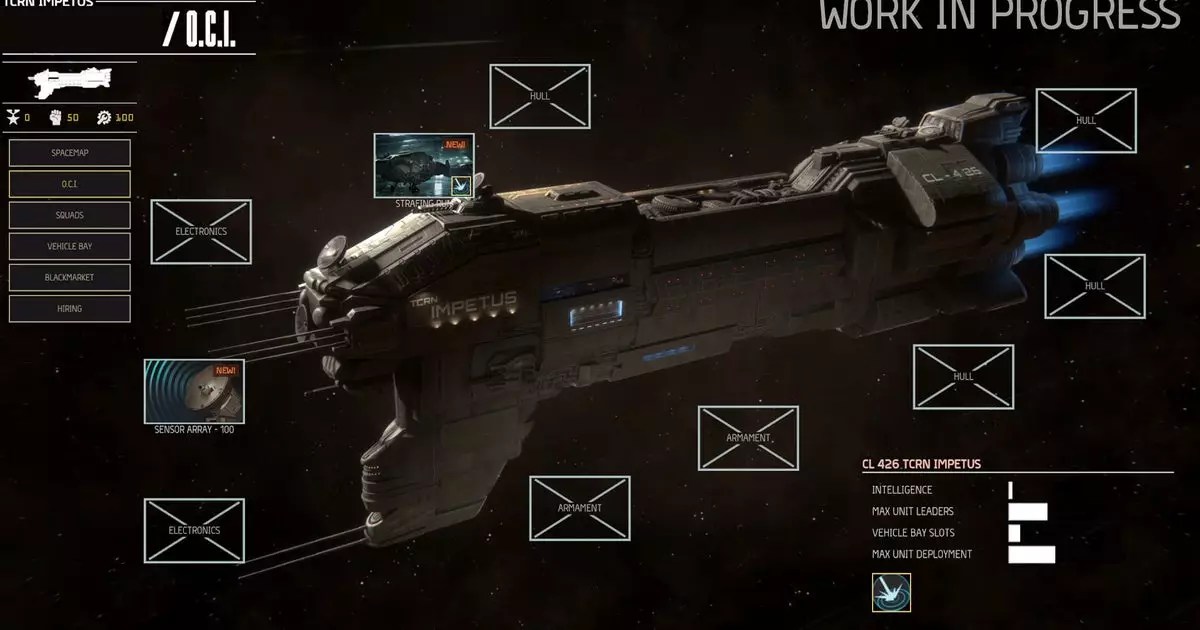In the realm of turn-based strategy gaming, the intricate balance of gameplay elements often dictates the overall experience. “Menace,” developed by Overhype, epitomizes this complexity, combining tactical battles with a rich role-playing backdrop. Staff Sergeant James Archer’s earlier impressions provided some insight, yet it’s the strategic layer surrounding the combat that enriches the gameplay, elevating it from a mere tactical skirmish to a full-fledged narrative experience. The strategic layer, akin to the foundation of a well-crafted sandwich, is essential for digesting the engaging components of the game.
The operational depth comes not just from the tactical skirmishes but from how players will navigate the challenges that encircle them in the Wayback solar system. Leveraging this starmap, players are tasked with managing factions and resources while pursuing their mission objectives. Indeed, the significance of these strategic decisions cannot be understated—they shape the narrative arc of the game and the fate of both factions and crew alike.
Players will frequently return to the starmap to guide their progress, a decision-making hub where planets and faction requests become focal points in the strategic gameplay. Engaging with various factions can alter reputational dynamics, as neglecting their needs might lead to long-term consequences such as decreased support or hostility. This layer of gameplay brings forth an essential tension within “Menace,” forcing players to weigh immediate goals against potential costs that might arise later.
On this starmap, players will also manage critical resources, such as promotion points for leveling up squads, Operational Capability Improvements (OCI) for enhancing the ship, and authority points to maintain crew morale—a feature that evokes both sympathy and tension towards crew management. The motley crew of characters presents a unique challenge; their liabilities can turn into unpredictable liabilities, creating unpredictable scenarios that can either add layers of drama or frustration to the gameplay. This management aspect of the crew engages with the classic strategy-RPG formula, where decisions can come down to balancing short-term gains with long-term stability.
Among the more pivotal mechanics is the ship upgrade system for the Impetus, where active and passive enhancements enrich strategic gameplay during missions. Players decide how to equip the ship, whether they opt for offensive capabilities like bombs or defensive measures such as health restoration for units. A noteworthy feature is the intelligence-gathering upgrade—this capability potentially reshapes mission outcomes. Opportunities to scout enemy positions introduce a level of preemptive strategy that blurs the lines between firepower and planning, aligning favorably with contemporary tactical gaming trends that increasingly prioritize reconnaissance.
Furthermore, the armory screen revitalizes the experience by allowing players to customize their squads with unique weapons, armor, and accessories. The individuality of squad leaders, reflected in their unique skill trees and traits, also fosters an emotional connection to each character. This connection heightens the stakes in battles, making victories feel more rewarding and losses more poignant.
As the game nears its release, it’s clear that “Menace” is building toward a larger narrative tapestry that will encompass more than just tactical encounters. Future updates promise the inclusion of a black market for resource management, suggesting that the economic aspect of the game will also play a significant role. However, as appealing as this sounds, some fans may feel apprehensive. Would these additional features transform gameplay, or merely add more layers without true innovation? The anticipation for how these dynamics will evolve continues to grow.
Ultimately, while “Menace” may tread familiar territory in terms of strategy mechanics, it succeeds in weaving together various elements into a cohesive narrative experience. Navigating through the complex web of faction politics, strategic upgrades, and crew management implies that players will need to engage thoughtfully with every decision. In synthesizing these diverse gameplay parts, Overhype might just craft a gaming experience rich enough to satisfy both strategy enthusiasts and narrative-driven players. As the release draws near, one can only hope for an experience that exceeds expectations—melding together strategy, lore, and character in a compelling saga that keeps players coming back for more.


Leave a Reply